If you’re wondering if you can put polyurethane over paint, the answer is yes – but it’s not always a simple process. In this guide, we’ll walk you through the basics of polyurethane application and offer some tips to make the process go as smoothly as possible. Plus, we’ll answer some common questions about polyurethane and paint to help you decide whether this coating option is right for your project.
What is polyurethane?
Polyurethane is a type of synthetic resin that comes in both liquid and solid form. It’s often used as a protective coating for wood surfaces, and can be applied over paint.
Water-based polyurethane is the most commonly used type for home projects because it’s easy to apply and clean up. Oil-based polyurethane has a more durable finish but takes longer to dry, while lacquer-based polyurethane dries quickly but can be difficult to work with.[1]Will polyurethane stick to all surfaces?
Polyurethane can adhere to many different types of surfaces, including wood, metal, and plastic. However, it’s important to make sure that the surface is clean and free of any dirt or debris before applying polyurethane. Otherwise, the polyurethane may not adhere properly and could peel off over time.

Another consideration is whether the surface has been previously painted or not. If the surface has been painted, it’s generally best to remove the paint before applying polyurethane. This will help ensure that the polyurethane adheres properly and doesn’t cause any peeling or chipping down the road.[1]
To prep your painted surface for polyurethane.
You’ll want to make sure that the paint is fully cured before applying polyurethane.
For older paint jobs, it’s best to check the manufacturer’s instructions to be sure. Once you’re confident that the paint is dry, lightly sand the surface with fine-grit sandpaper (200+) to create a smooth surface for the polyurethane to adhere to. Wipe away any dust created by sanding with a clean cloth before continuing. You’re now ready to apply polyurethane![1]What kind of polyurethane should you use?
There are two types of polyurethane that you can use for your project: oil-based and water-based. Oil-based polyurethane will provide a more durable finish, but it can yellow over time and is more difficult to apply. Water-based polyurethane dries clear and is much easier to apply, but it doesn’t last as long as oil-based polyurethane.
Not all oil-based polyurethanes are created equal, so it’s important to read the labels before making your purchase.Water-based polyurethane is a good choice for most projects, but it’s especially well-suited for painted surfaces. It’s important to note that water-based polyurethane can raise the grain of the wood, so you’ll need to sand it down before applying the finish.
How to Apply Polyurethane Over Paint
Step 1: Wash the painted surface.
Wash the painted surface with a mild detergent and water to remove any dirt, grease or grime. Allow the surface to dry completely.[2]
Step 2: Scuff the surface.
Next, you’ll need to scuff up the surface of your painted item. This will help the polyurethane adhere properly. You can do this by sanding the surface with fine-grit sandpaper. Just make sure to go slowly and evenly so you don’t damage the paint job underneath.
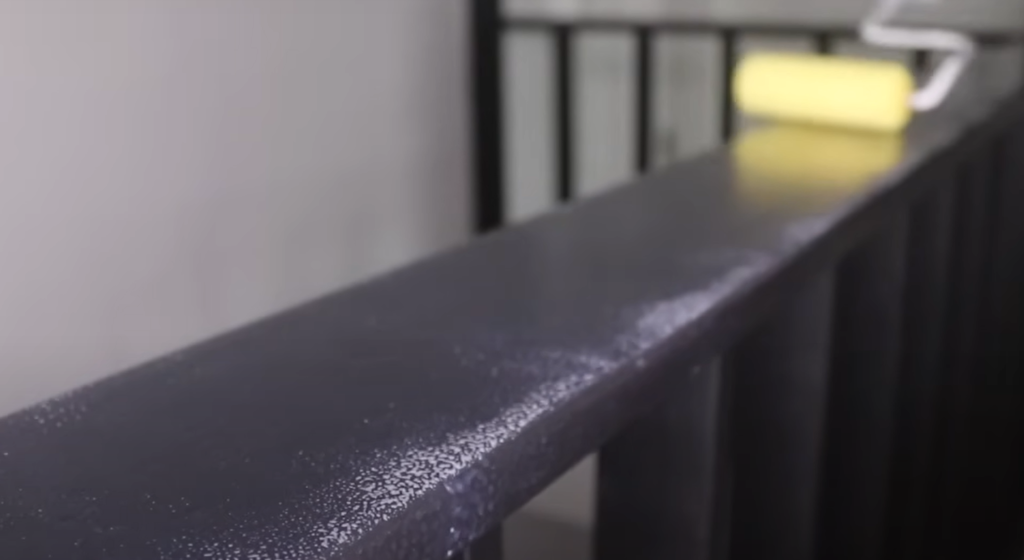
After you’ve finished scuffing, wipe away any dust with a clean cloth. Then, you’re ready to move on to applying the polyurethane.[2]
Step 3: Apply one coat, then scuff.
After your paint has dried for at least 24 hours, you can begin to apply polyurethane. Start by applying one even coat with a brush or roller, making sure to get into all the nooks and crannies. Once that coat has dried (according to the instructions on the can), lightly sand it with fine-grit sandpaper. This will help the next coat of polyurethane adhere better.
Wipe away any dust created by sanding before moving on to the next step.
Step 4: Apply a second coat.
After the first coat of polyurethane has dried completely, apply a second thin coat using the same technique. Again, be sure to work in small sections and maintain a wet edge to avoid lap marks.
Applying Polyurethane Over Different Types of Paints
Can You put polyurethane over chalk paint?
The short answer is yes, you can apply polyurethane over chalk paint. Chalk paint has a very matte finish, which can be perfect for giving furniture an aged look. However, if you want to protect your chalk-painted furniture or give it a more polished appearance, applying a coat of polyurethane is a good option.
Before applying polyurethane over chalk paint, make sure the paint is completely dry and that you’ve sanded any rough edges smooth. You should also apply a primer before painting with chalk paint, as this will help the paint adhere better to the surface and prevent any bleeding through of the color.[4]
Can You Put Polyurethane Over Spray Paint?
The quick answer is yes, you can put polyurethane over paint- however, there are a few things you need to do first in order to make sure that your project turns out looking its best. Let’s take a closer look at what those steps are so that you can get started on your next painting project with confidence!
One important thing to keep in mind is that not all paints are created equal. You’ll want to make sure that the paint you’re using is compatible with the polyurethane before moving forward with your project. If you’re unsure, it’s always best to consult with a professional or read the labels carefully before making any decisions.[4]
Can You Put Polyurethane Over Latex Paint?
The short answer is yes, you can put polyurethane over latex paint. However, there are a few things you need to do first in order to ensure that the polyurethane adheres properly.
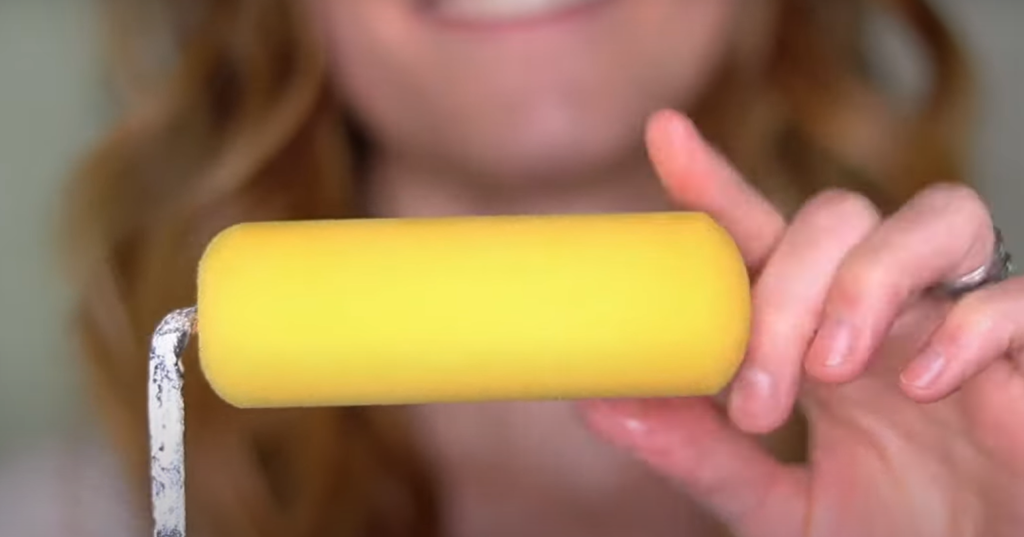
Before applying polyurethane, you’ll want to lightly sand the surface of the paint with a fine-grit sandpaper. This will help create a smooth surface for the polyurethane to adhere to. Once you’ve finished sanding, be sure to remove any dust from the surface with a damp cloth.
Can I Put Polyurethane Over Acrylic Paint?
The short answer is yes, you can put polyurethane over acrylic paint. However, doing so comes with a few considerations that you’ll want to take into account before moving forward with this project.
For one, the type of paint you used will play a role in whether or not applying polyurethane is a good idea. If you used an oil-based paint, then applying polyurethane should be just fine. However, if you used a water-based paint, then it’s best to wait 24 hours before applying any sort of sealant or topcoat. This gives the paint time to properly cure and dry out so that it won’t react poorly with the polyurethane.
Can I Put Polyurethane Over Enamel Paint?
Generally, you can apply polyurethane over enamel paint. If the enamel paint is in good condition and isn’t peeling, then you should have no issue applying a layer of polyurethane over it. One thing to keep in mind though is that if your enamel paint is old, it might not adhere as well to the polyurethane. In this case, you may need to sand down the surface of the enamel paint before applying the polyurethane.
Can polyurethane be used outdoors?
Yes, polyurethane can be used outdoors if you choose the right type. There are two types of polyurethane finishes: oil-based and water-based. Oil-based polyurethane has a higher level of durability and will last longer in outdoor conditions than water-based polyurethane. However, it is also more difficult to apply and takes longer to dry. Water-based polyurethane is easier to apply and dries more quickly, but it does not have the same level of durability as oil-based polyurethane. If you decide to use an oil-based polyurethane for your outdoor project, make sure that it is specifically designed for outdoor use.[1]
How to get the smoothest and best looking results with polyurethane
If you’re going to polyurethane over paint, there are a few things you can do to ensure the smoothest and best looking results. First, make sure the paint is completely dry before applying polyurethane. If it’s even slightly damp, the polyurethane will not adhere properly and will appear streaky.

Next, sand the surface lightly with fine-grit sandpaper to create a smooth surface for the polyurethane to adhere to. Once you’ve sanded, wipe away any dust with a clean cloth before proceeding.
Finally, when applying polyurethane, always use a foam brush or roller specifically designed for use with this product. This will help avoid bubbles and streaks in the finish.[1]
How to achieve a glass-like finish with polyurethane
If you want your paint job to have a high-gloss, glass-like finish, polyurethane is the way to go. You’ll need to apply at least three coats, sanding in between each one. The process is pretty straightforward:
First, make sure your surface is clean and dust-free. Apply a thin coat of polyurethane with a brush or roller, making sure to get into all the nooks and crannies. Let it dry for at least four hours before sanding it down with fine-grit sandpaper. Wipe away any dust with a tack cloth before applying the next coat. Repeat these steps until you’ve achieved the desired level of shine.[1]
How to clean up after you are done applying polyurethane
After you are done applying polyurethane, you will need to clean up your work area. Here are some tips on how to clean up after you are done applying polyurethane:
- Wipe up any drips or spills with a damp cloth.
- Use mineral spirits to remove any Polyurethane that has gotten on your skin.
- Clean your brushes and other tools with mineral spirits.
- Dispose of any rags or other materials that have been soaked in mineral spirits in a sealed container.[1]
What type of polyurethane to use over paint?
Oil-based polyurethane is the best type of polyurethane to use over paint. It has a high durability and will protect your paint from scratches and scuffs. Water-based polyurethane is also an option, but it is not as durable as oil-based polyurethane.[3]
Tips for applying polyurethane over paint
Applying polyurethane over paint can be a great way to add extra protection and durability to your painted surfaces. Here are a few tips to help you get the best results:
- Use a high-quality brush or roller specifically designed for use with polyurethane. This will help ensure a smooth, even finish.
- Make sure the paint is completely dry before applying polyurethane. If it’s even slightly damp, the polyurethane will not adhere properly.
- Apply thin coats of polyurethane, allowing each one to dry completely before adding another. This may take several days, but it’s worth it for a professional-looking finish.[3]
Can you mix polyurethane with paint?
The short answer is yes, you can mix polyurethane with paint. However, there are a few things to keep in mind when doing so.
First, it’s important to use a water-based polyurethane rather than an oil-based one. Oil-based polyurethanes can yellow over time, which may not be the look you’re going for.
Second, make sure the paint is completely dry before applying the polyurethane. If not, the two will mix and you’ll end up with a sticky mess.
Finally, once you’ve applied the polyurethane, give it plenty of time to dry before adding any additional coats or putting anything else on top of it.
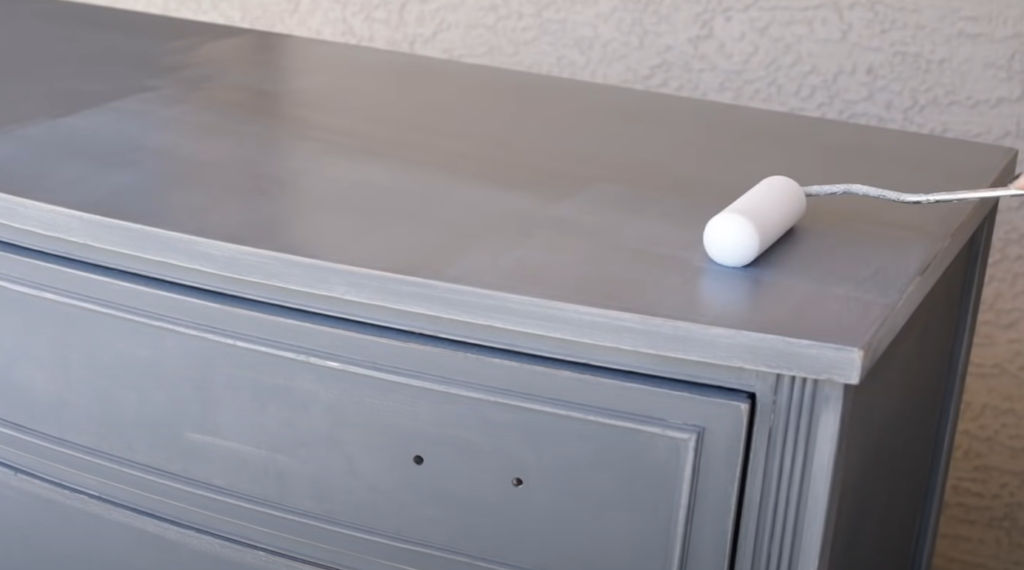
With those things in mind, mixing polyurethane with paint is a perfectly viable option if you’re looking to give your project a little extra protection. Just be sure to take your time and follow the instructions carefully.
Troubleshooting Tips
If you’ve decided to apply polyurethane over paint, there are a few things you can do to ensure the best results. First, make sure the paint is completely dry – if it’s even slightly tacky, the polyurethane won’t adhere properly.
Another thing to keep in mind is that polyurethane can yellow over time, so if you’re planning on using a light-colored paint underneath, be aware that it may not stay that way for long. And finally, always test your products on a small area first to see how they interact – sometimes different paints and polyurethane can react in unexpected ways.[4]
FAQ
How Long Should Paint Dry Before Applying Polyurethane?
You should wait at least 24 hours for the paint to dry before applying polyurethane. If you can, wait 48 hours or more to give the paint plenty of time to set up.
Does the Painted Material You Are Applying Polyurethane Over Matter?
Possibly. Polyurethane can be applied to many different types of surfaces, but for a long-lasting finish, it’s best to apply it over paint rather than bare wood. If the surface you’re working with is previously painted and in good condition, you should have no problem applying polyurethane over it.
Does my Paint Even Need Polyurethane?
Before we get too ahead of ourselves, it’s important to ask the question – does your paint even need polyurethane? If you just painted your cabinets or trim and they seem fine, then the answer is probably no. Polyurethane is really only necessary if you want an extra layer of protection against scratches, stains, and wear and tear.
That being said, there are some circumstances where you might want to apply a layer of polyurethane even over new paint job. One example would be if you’re painting something that will see a lot of traffic or use – like kitchen cabinets or doors. In this case, the added durability of polyurethane can help extend the life of your paint job.
Can You Put Polyurethane Over High Gloss Paint?
The answer is yes, you can put polyurethane over high gloss paint. In fact, polyurethane can be applied to any type of paint, as long as the surface is properly prepared beforehand.
Can you put polyurethane over painted concrete floors?
The quick answer is yes, you can put polyurethane over paint on concrete floors. However, there are a few things to consider before doing so.
Polyurethane over painted cabinets?
The same goes for cabinets- you can put polyurethane over paint, but there are a few things to consider first.
For both concrete floors and cabinets, the biggest thing to consider is the type of paint that was used. If the paint is oil-based, it’s likely that the polyurethane will adhere just fine. However, if the paint is latex-based, it’s best to lightly sand the surface before applying polyurethane. This will help create a smooth finish and ensure that the polyurethane adheres properly.
Useful Video: Polycrylic or Polyurethane: How and When to Apply | This or That DIY | Wood Finishing Basics
Conclusion
So, can you put polyurethane over paint? The answer is yes- but there are a few things to consider first. Make sure you know the type of paint that was used and take the necessary precautions (like sanding) to ensure a smooth finish. With these tips in mind, you’ll be able to apply polyurethane over paint like a pro!
References:
- https://wigglywisdom.com/can-you-put-polyurethane-over-paint/
- https://www.hunker.com/13412939/how-to-apply-polyurethane-over-paint
- https://woodsmithspirit.com/can-you-put-polyurethane-over-paint/
- https://furnitureflippa.com/can-you-put-polyurethane-over-paint/


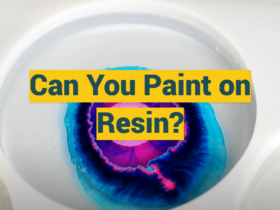

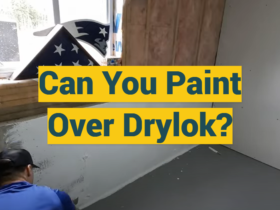
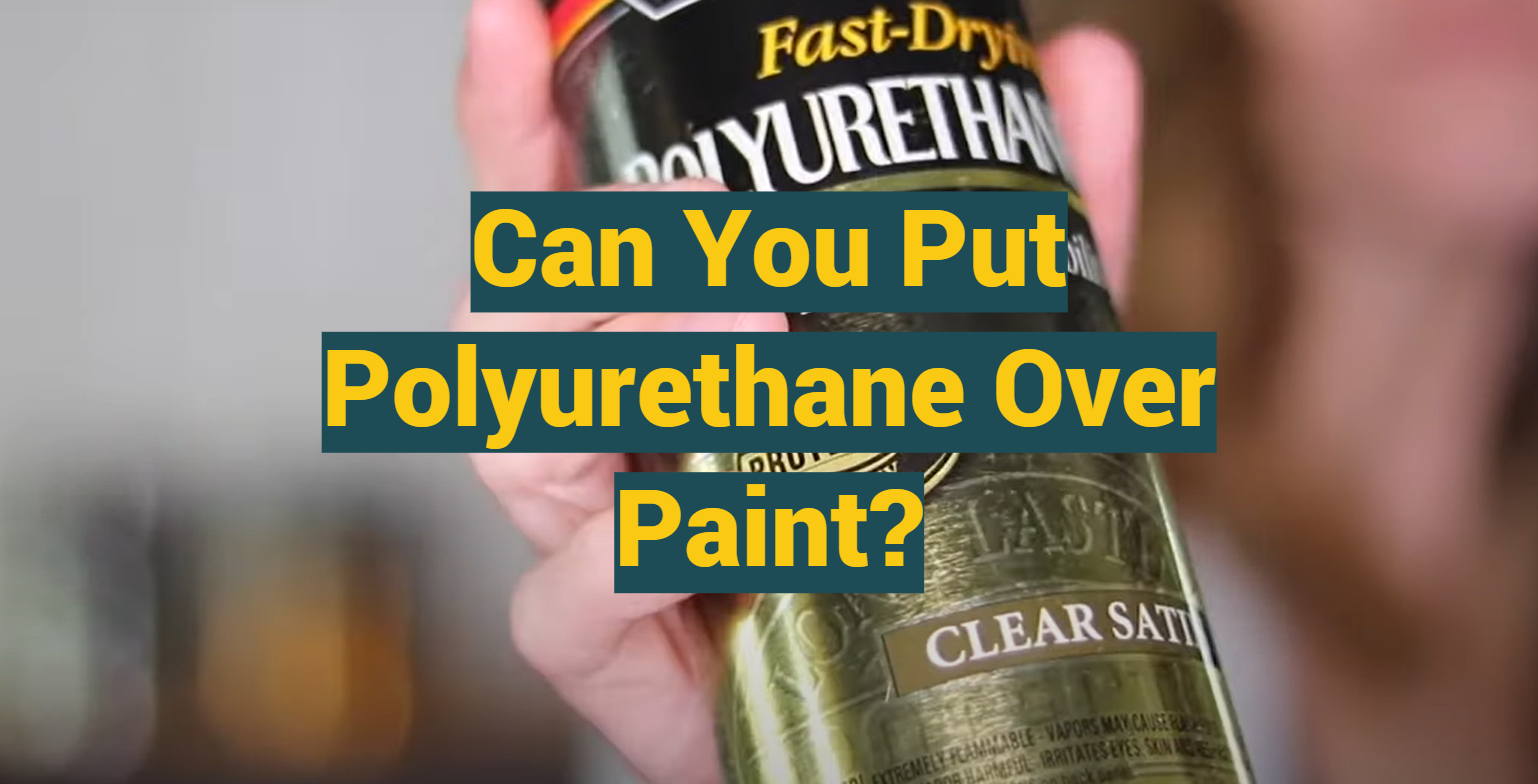




Leave a Review